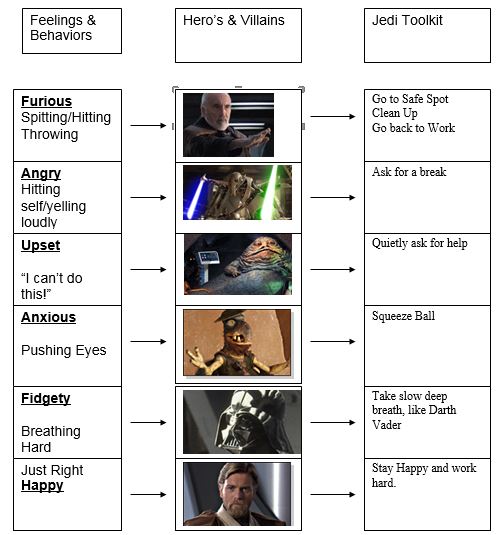Successfully teaching students with autism how the world works often requires us getting to know a bit about their world first. This means coming to understand their individual interests, passions, and fears that drive them. Over the years as an Autism Specialist I have found that when you take a “highly restricted interest” of a student on the spectrum and incorporate it into their prescribed behavior plan, you at times can actually increase the effectiveness of that plan. Here are a few of my favorites that I have been involved with.
This was actually put together by a world class para educator that I work with. It was a nine piece token board that used Minecraft pieces instead of stars or smiley faces. When the inventory became full, the student got to take a break with a preferred activity. When the break was over, the board was cleared and the collecting of pieces began again.
This reinforcement board was just one component to an incredible story of a boy with autism that actually ended up involving one of the better known players for the Seattle Seahawks. As the student was verbally reinforced for appropriate behavior throughout their day, the helmet was simultaneously moved five yards at a time. When a touchdown was scored, the student received a prize.
This was a modified version of the good behavior game where the student received points for using the desired behavior and the teacher received points when undesired behaviors were seen. But since the student was a NASCAR fanatic, the student was Kyle Busch and the teacher was Danica Patrick. Each day it was a competition to see who could get the most laps and win!
This is one of my favorites. The team was struggling how to quantify the student’s behavior in a way that would be meaningful. Once they tapped into his interest of the Washington State Cougars and his disgust of the Washington Huskies he was better able to understand how well he was doing at staying quiet and on task while at school. While this was not the only intervention used for this individual, incorporating this highly restricted interest was a big turning point in his program.
A former student of mine struggled with the concept of emotions and a hierarchy of tools as it was presented in the Incredible 5 Point Scale. So we worked together and agreed upon Star Wars (his big interest) characters that represented each level. This would not have been successful had I not sought his input. While I would have put Darth Vador at the top as the worst guy in all of Star Wars, my student saw him as a conflicted character so he was just one level worse than being a Jedi. It actually worked out great because directive at that level was deep breathing, just like Darth Vador does.
This was an Angry Birds visual schedule! For each item the student completed, they knocked off a pig. Pretty creative, right?!
 This student was not only a fan of hockey, but specifically the L.A. Kings. So we broke down his six period day into six periods of hockey and allowed Wayne Gretzky to provide some inspirational words of advice.
This student was not only a fan of hockey, but specifically the L.A. Kings. So we broke down his six period day into six periods of hockey and allowed Wayne Gretzky to provide some inspirational words of advice.
 This was for the student who was completely into trains but had a hard time staying on track. The bottom row of boxes was filled with three upcoming activities followed by his most desired reinforcer. If he started to go a little off track alternate work was presented that still led him to a reinforce (however lesser preferred). The student was always given the chance to get back on track with everyone else or just work at his own comfort level. This was set up so that he would always be motivated to achieve at the level of his peers while also allowing him some structured flexibility in what needed to be done, helping him from veering off too far in his day.
This was for the student who was completely into trains but had a hard time staying on track. The bottom row of boxes was filled with three upcoming activities followed by his most desired reinforcer. If he started to go a little off track alternate work was presented that still led him to a reinforce (however lesser preferred). The student was always given the chance to get back on track with everyone else or just work at his own comfort level. This was set up so that he would always be motivated to achieve at the level of his peers while also allowing him some structured flexibility in what needed to be done, helping him from veering off too far in his day.
While these are all great examples of getting creative for the sake of kids, there is no guarantee that doing such work for your student will be a difference maker. To be perfectly honest, despite my best efforts the Angry Birds schedule did not fly. The students into hockey and trains, they moved out before we could fully test their supports. What can be said is that there is a much greater potential for growth when we look at each student with autism as an individual with strengths and interests that can be capitalized on. You might use those interests to help initiate communication, foster social skills, or reinforce behavior, but it requires getting to know the child first. When teaching kids with autism, make sure you are able to speak their language before you ask them to speak ours.











